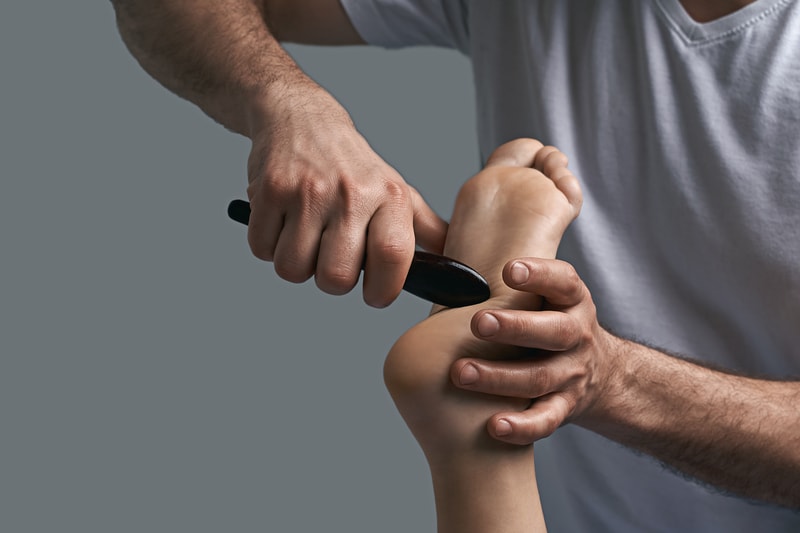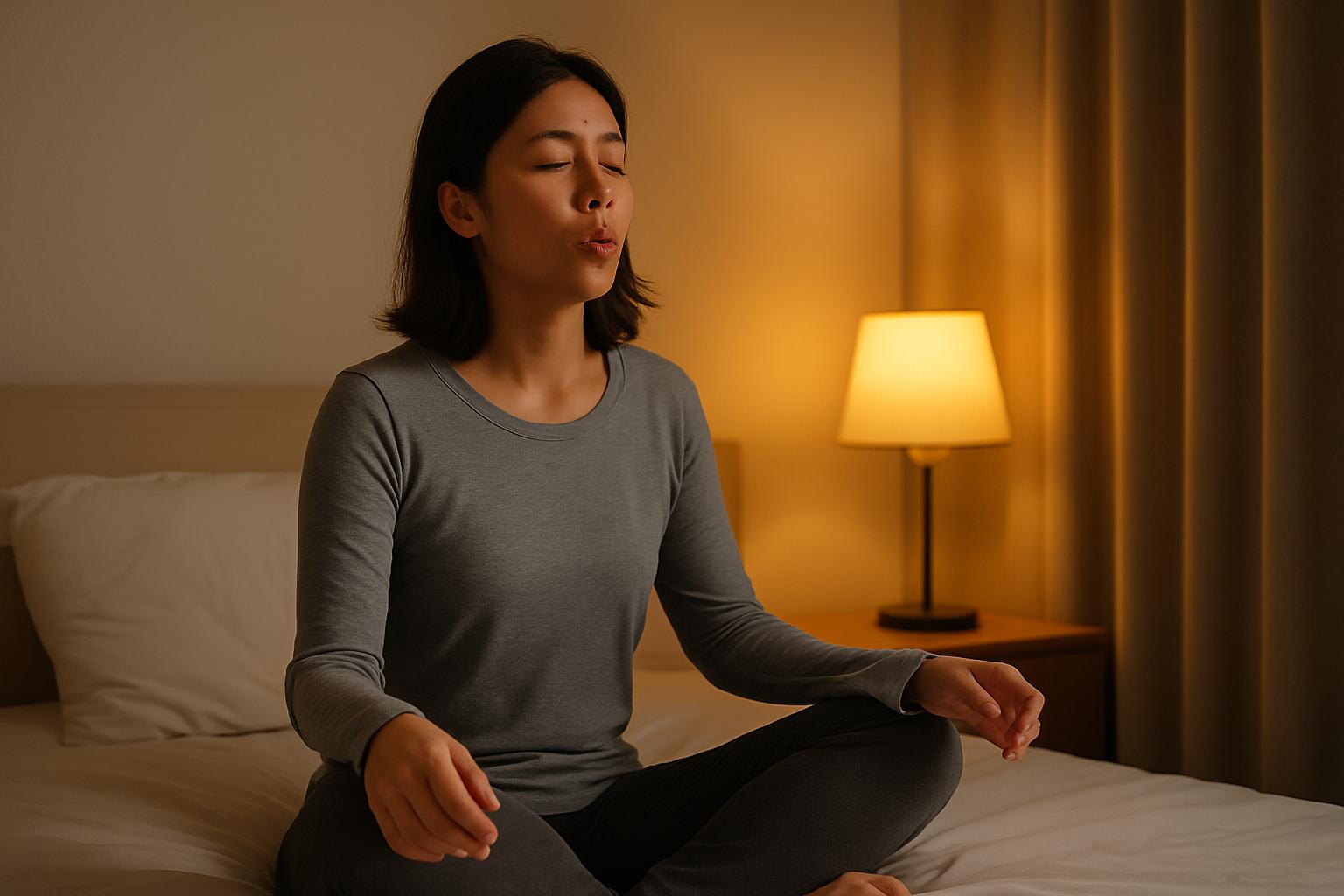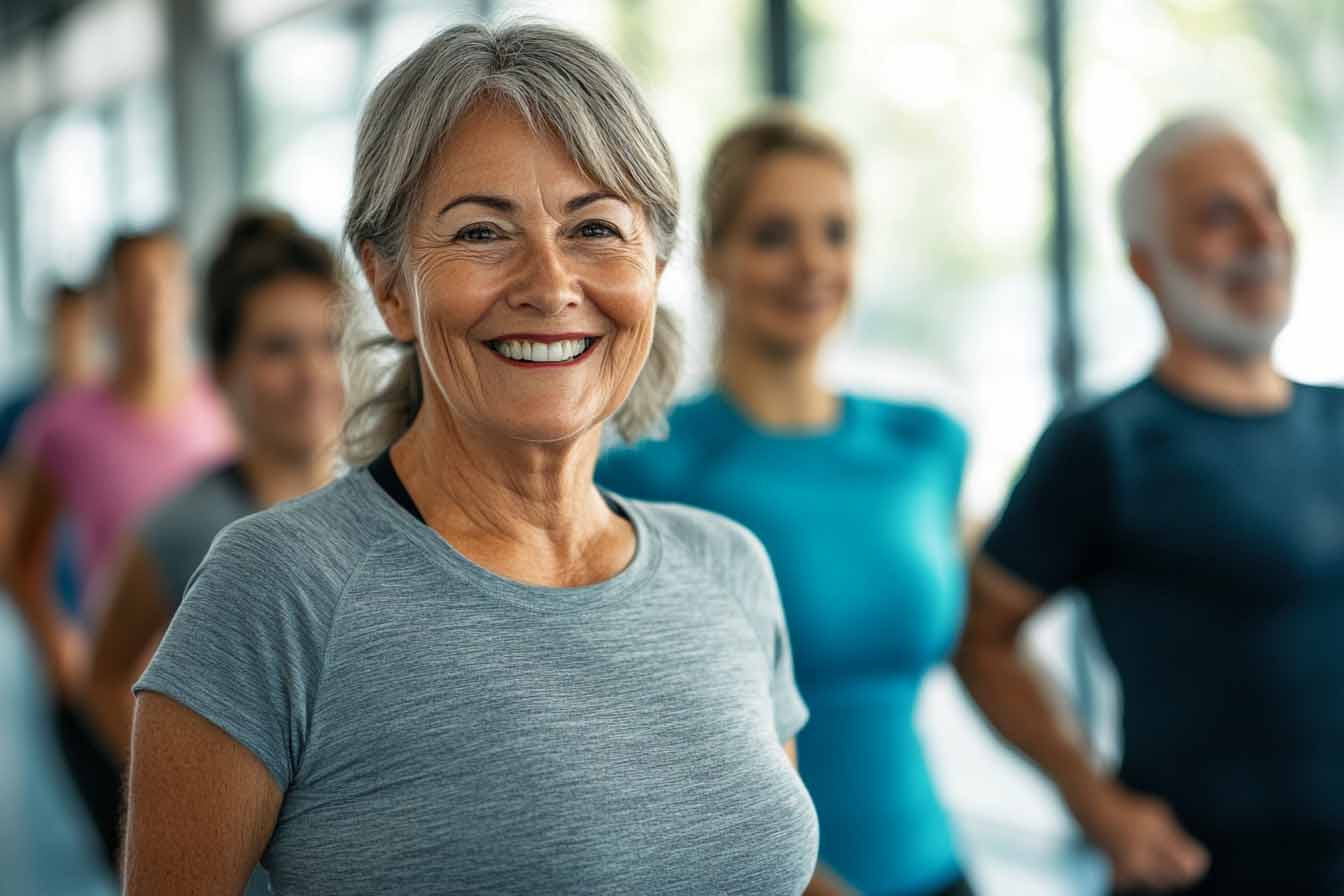Healthy Legs And Feet Are Important To Our Overall Well-being, And This Method Of Treatment Will Show You How To Achieve True Comfort.
Our legs and feet work hard to support us every day. As a result, people commonly experience pain, fatigue, and edema in these parts of the body. When it comes to treating these complications, all of the options can be overwhelming. Surgery and medication can help, but there is a simpler alternative that is far less invasive. Gua sha is an ancient Chinese method of treatment. For gua sha, feet are a unique location of treatment.
The feet and legs contain several specialized nerves as well as acupressure points. The practice of gua sha can activate these points and increase your overall health!
Gua Sha Massage Practice:
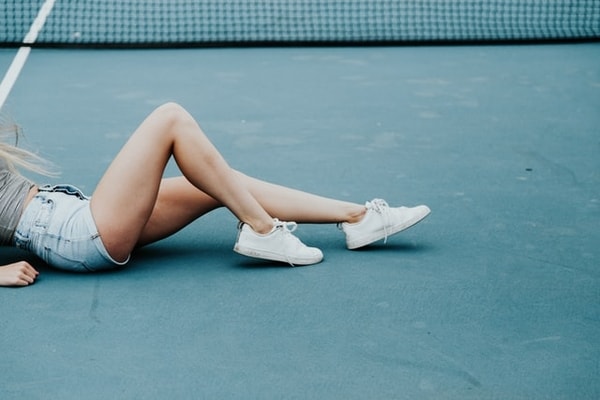
This treatment has a vast amount of history behind its origins in traditional Chinese medicine. Gua sha is actually believed to be one of the oldest forms of traditional Chinese medicine on record. The simplicity, flexibility, and effectiveness of this treatment method have maintained its practice to the current day.
Gua sha is most commonly practiced on the back, neck, shoulders, limbs, and butt. However, the positive benefits associated with this treatment have caused diversification and experimentation in other areas. On the body, gua sha can be used to relieve muscle pains and speed up healing. It is also commonly used to reduce fevers that are caused by illnesses like the common cold. Aside from gua sha’s ability to provide relief from pain, its ability to improve skin quality was also noted. When used in lighter patterns on the face, gua sha helped reduce wrinkles’ appearance and reduced stretch marks on the body.
With so many positive effects, it only makes sense to apply the practice of gua sha to feet as well. Commonly, gua sha is practiced using two main methods. One being tonifying therapy, in which the skin is rubbed with a gua sha tool in a slow, rhythmic, and moderately pressured movement. This motion helps tone the skin and move the fluids beneath it without drawing much “sha” or discoloration to the surface.
The other method is more commonly practiced. It involves heavy and more rapid rubbing of an afflicted area using the gua sha tool. This practice is more likely to bring “sha” to the surface, and it is best performed on muscled areas of the body or to aid with fevers.
The beauty of gua sha lies in its ability to be adapted to every individual’s unique needs. With various tool shapes and personal control over the pressure being administered, you can personalize your gua sha feet treatment.
How To Perform Gua Sha On Your Legs:
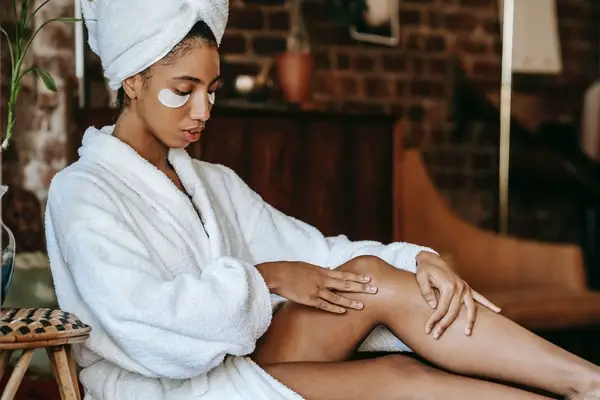
When performing a gua sha leg massage, there are more bones to work around and specific areas to focus on. For this reason, it is crucial that you first understand how to practice gua sha on your legs before you start rubbing every area with your gua sha tool.
Before you even pick up your gua sha tool, you will want to stretch. Stretching begins to loosen the muscles and tendons in a way that is gentle and relaxing. Choose stretches that focus on joint mobility, such as flexing the hips, knees, and ankles. Modify the stretches as needed, and don’t over-exert yourself. You can find various gentle stretching exercises online and mix them to create a routine that fits your needs.
The second part of your gua sha leg massage preparation includes identifying painful, swollen, or tight areas. You can generally notice areas of discomfort during regular activity, but as you sit down in preparation for your gua sha treatment, you may notice those areas less. Gently running your hands or fingers over your legs and feet can help you feel areas where muscles are distinctly tight, internal tissue is scared, or edema is forming. Only apply as much pressure with your hands as needed to identify your areas of focus; you need not rub these areas hard yet.
It is almost time for you to enjoy your gua sha leg massage, but there is one last step in preparation, and it is crucial. You will need to apply a nourishing body oil to your legs, feet, and any other area where you plan to use your tool. Take your time applying your oil, but don’t overwork it. You want to maintain a layer of oil on your skin’s surface to help the tool glide and avoid surface damage. For this reason, thicker oils are commonly used. However, most body oils will work as long as they don’t irritate your skin and anti-bacterial properties are a plus.
Gua sha massages can cause slight damage or irritation to the skin’s surface. These small openings may be hardly noticeable, but they can still lead to infection and other complications. To be safe, ensure that your gua sha tool has been sanitized before use and that the oil you are using is also safe.
Now you are prepared to use your gua sha tool! Find a comfortable position where you are supported and balanced. And firmly grasp your gua sha tool in one hand. Using medium pressure, focus on one area at the top of your leg and repeatedly rub the area in a downward motion with the gua sha tool. You stroke from top to bottom because it follows the qi’s movement in your meridian. The only time you stroke in the opposite direction is trying to resolve edema or varicose veins. Make sure to mirror every movement of the other leg to maintain balance. Follow the natural curves of the area and adjust your pressure as needed. Typical gua sha practitioners commonly leave gua sha marks from their rubbing, but you don’t have to push until you see marks. Especially if it is your first time trying gua sha, you will want to be gentle and work your way up to a comfortable yet effective pressure for you.

After a few seconds to a few minutes of rubbing in one area, you can move to the next. More muscle or softer areas, like the calves and thighs, are suitable for deeper or slightly longer strokes. Be sure you do the front, back, and sides of each area, all in the same direction to promote fluid movement and lymph drainage. When you get to boney areas, such as the knees and ankles, you may need to apply light pressure and focus on acupressure points instead of long strokes. This may include direct pressure and minor circular or short-stroke motions at these points. You can check out these 8 common calf acupuncture points for beauty.
As you continue this practice, you should notice some immediate heat and slight swelling in rubbed areas. However, these results should dissipate within a few days, leaving only the physical benefits. Edema commonly appears around the ankles and legs due to gravity’s effect on the lymphatic system. A gua sha leg massage helps move the lymph, drain the fluid causing edema, and brings any associated toxins to the surface. For best results, gua sha should be performed regularly to fully heal in between each treatment. Remember to drink a glass of warm water after every treatment because it helps to flush away the toxin. According to TCM, It is also important to avoid bathing after treatment for up to an hour. This is because your skin’s pores remain wide opened after the warm exercise, and you could easily catch a cold if you take a shower immediately after it.
How To Perform Gua Sha Massage On Feet:

The feet are a sensitive center of pressure points and nerves. For this reason, they include more points of pressure in contrast to the longer strokes associated with the legs. Following a foot massage chart can be immensely helpful when it comes to performing gua sha on feet. It is also best to pay special attention to following the curves on all sides of the feet. Since you will still need to walk on your feet after performing gua sha, you want to be sure that you do not press hard enough to cause bruising. Damage to the skin or tissue caused by intense gua sha will be more difficult to heal on the feet since they are almost always in use.
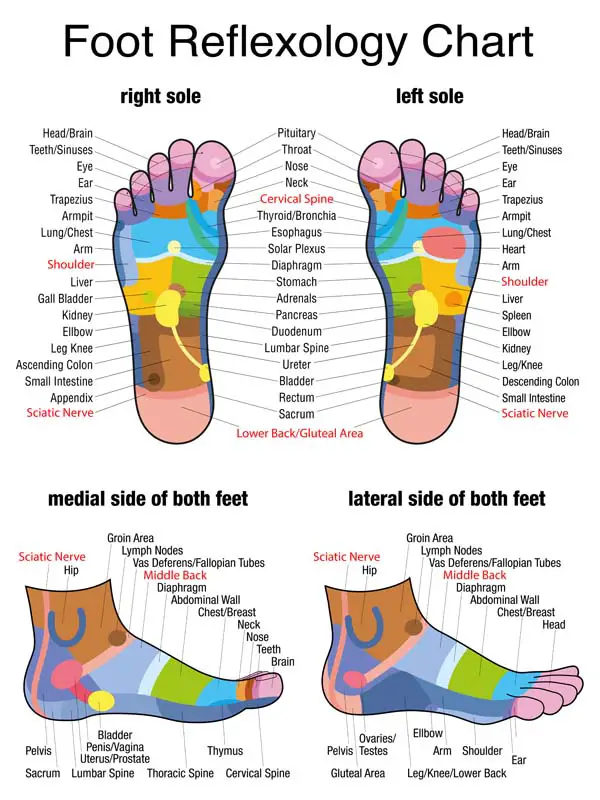
Benefits:
After completing your gua sha feet and leg massage, you should feel warm in those areas mixed with a sense of relief. Many people report a feeling of lightness and a long-term reduction of pain in treated areas. Since acupressure points are mixed in with the gua sha leg massage, you may also experience health benefits that extend to the rest of the body as well. These include improved immunity, relaxation, improved sleep, and much more.
Best Gua Sha Tools For Legs:

Gua sha tools come in a variety of shapes, materials, and sizes. The best gua sha tools for legs and feet commonly involve a long rounded edge along with a more pointed yet dull edge. The longer edge is best for the rubbing patterns on muscled areas of the legs, while the dull pointed area is best for the boned areas and acupressure points that are commonly focused on during gua sha for feet.
Be sure your tool has a good gripping point so you can comfortably hold it in your hand without any strain on the wrists or fingers. The material of your gua sha tool can vary. Historically, this practice has been completed with the help of bone tools, coins, and even spoons. Shaped stone tools are the most specialized options available today for practicing gua sha on feet. As long as the material is sturdy and smooth, it should work well. The sturdiness ensures that the tool will not break during use, while the smooth surface makes for easy cleaning.
Enjoy The Results!
Results are likely to appear after the first gua sha leg massage or gua sha feet treatment, and as you become more familiar with gua sha massage, your benefits will continue to improve. Take your time customizing the practice and always prioritize your health. Enjoy!

Try our Anti-Aging Gua Sha Tool designed to bring out your skin’s natural glow.
Best Gua Sha Product- Anti-Aging: The tool is designed to target 11 specific aging signs such as wrinkles and sagging skin. By following the 7-step routine, users can improve skin firmness and reduce fine lines naturally.
- Enhances Skincare Routine: It works effectively with serums and lotions, boosting absorption and efficacy of skincare products.
- Visible Skin Improvement: Users can expect a smoother complexion, reduced puffiness, and a more youthful appearance.
 P. Sze
P. Sze 